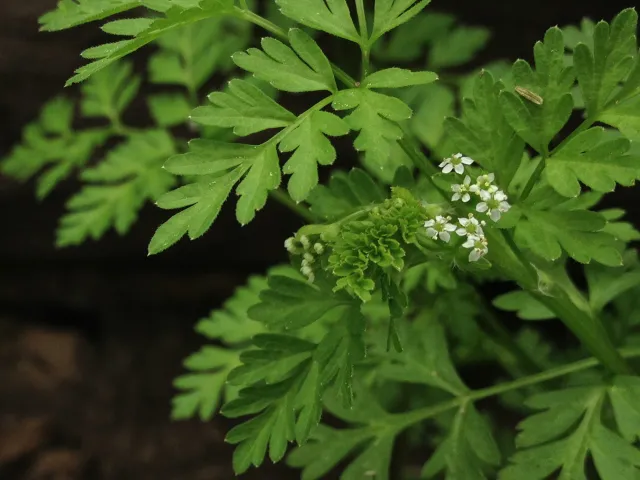
Scientific Name
Anthriscus cerefolium
General Information
Chervil is an annual herb but in milder areas it can be a biennial. It grows 16 inches tall and a foot wide, an Asian native that has naturalized in much of Europe and the US. The leaves exude a slight anise flavor and contain a volatile oil that disappears when cooked. Therefore, it is added to hot foods just before serving. It is also used to flavor salads, eggs, cheese, and poultry.
When to Plant
Sow seeds spring through fall. Chervil tends to bolt in warm weather, so it's easiest to grow in the cooler months. To ensure fresh leaves throughout summer, make succession plantings every 3 to 4 weeks.
Planting
Seeds sprout in about 10 days at soil temperature of 60 degrees. Cover seeds lightly or not at all. Thin seedlings 12 inches apart. Direct sow is recommended due to its tap root. If transplanting, wait till there are at least 3 pairs of leaves.
Soil Requirements
Prefers fertile soil with compost added.
Water Requirements
Prefers moist soil. Without consistent water, chervil bolts and goes to seed.
Fertilizing
No fertilizer required unless planted in container. Containers should receive half strength fish emulsion after four weeks.
Pollination
It is pollinated by insects.
Harvesting
Best fresh as it loses its flavor if dried.
Storage
Store in water in a jar in the refrigerator for a couple of days.
Good Varieties for Marin
‘Brussels Winter’, ‘Crispum’, ‘Vertissimo’
Helpful Tips
Like most herbs, the leaves lose flavor as flowers emerge.
Common Problems
Relatively problem free
Pests- Diseases & More
Aphids (hose off), snails and slugs (pick off in early morning), and occasionally fusarium root rot (destroy and toss the plant) and powdery mildew (hose off or cut out).

